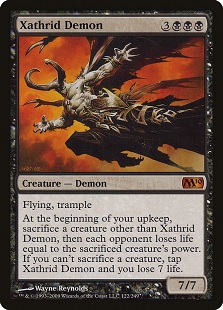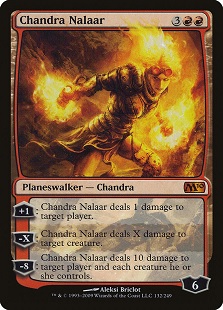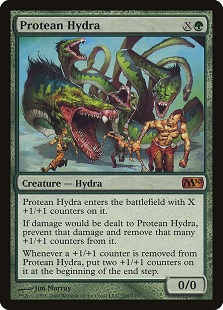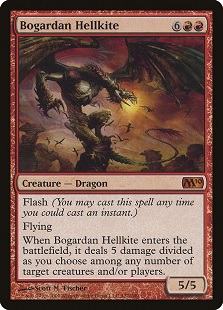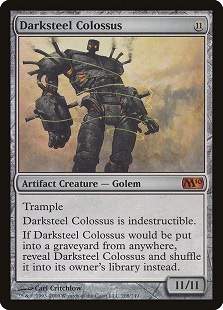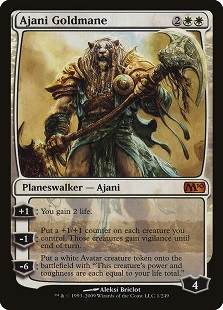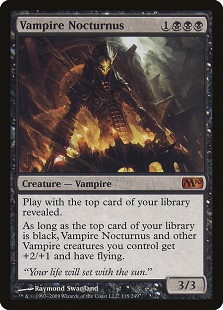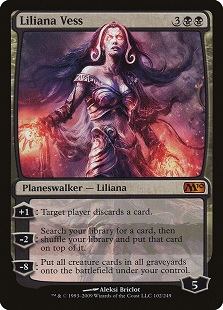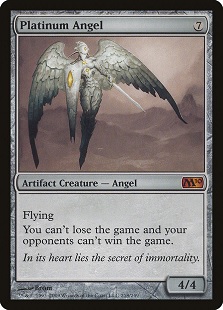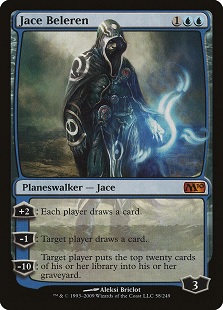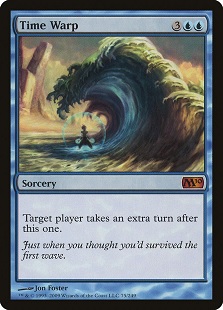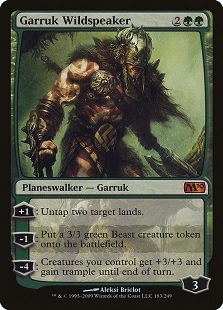Magic 2010 was a paradigm shift for Magic's core sets. These releases previously came out roughly once every two years, updating with a variety of different reprints from the game's history. As the years went on, though, they proved to be unexciting as they were just reprints of cards many players already had access to. Not only that, but the cards within and their respective Limited environments frequently felt primitive and boring. To spice things up, Wizards of the Coast introduced a change with this set: half of the set would be reprints and the other half would be entirely new designs. This revolutionary change also brought the addition of mythic rares, which I will be ranking here for you today! Let's dive right in!
15. Xathrid Demon
I love the concept of Xathrid Demon in theory. It's meant to be a sort of modern update to the old school classic Lord of the Pit. It does this decently enough by providing you some great incentive for sacrificing by making opponents lose life. Unfortunately, the downside to not having a creature to sacrifice is still tremendous and makes it really hard to recommend this card to anyone. There's a reason why, despite only two printings in older sets, it's still worth about 50 cents. No one wants this when there are so many better things you could be doing in Black.
14. Chandra Nalaar
When Chandra was previewed as part of the Lorwyn five, there was enough uniqueness to the card - as well as the other planeswalkers - that she demanded players' attention. By the time Magic 2010 rolled around, however, players were a lot more savvy. Two years had passed since Lorwyn landed and Chandra had proven to not be super great. She did see a bit of tournament play in 2010 and 2011, but in only a very small handful of decks and only as a one-of. Once you got into spaces like Commander and Cube, she became even less appealing. It's a damn shame given how beloved the character has become, but the original card was just by and large a big miss.
13. Protean Hydra
With my Conflux mythic ranking article, I noted how I had a real disdain for mythic hydras and how most of them never seemed to be that good. Case in point, Protean Hydra. The card is pretty cool in how it just keeps getting bigger and bigger, but there's no evasion to it and it ends up being largely unimpactful. Hell, in the following core set, Magic 2011, the card was actually reprinted as a normal rare as opposed to a mythic rare, largely due to how lacking in potency it really was.
12. Bogardan Hellkite
The inclusion of Bogardan Hellkite in this set at mythic is actually really interesting. The idea is simple: it's a popular casual card that ended up also being a tournament staple during Time Spiral block Standard. Unfortunately, that doesn't take into account the multitude of ritual effects and storm cards that made Bogardan Hellkite such a staple. You rarely ever cast the dragon on its own, but rather found multiple copies off the back of Dragonstorm to deal a ton of direct damage to your opponent's face and take them out. Without that context, the Hellkite looks paltry in comparison, and is way less exciting as a result.
11. Sphinx Ambassador
Sphinx Ambassador is such a weird little card. There's practically no competitive pedigree because it's mostly just a big dumb flier that rarely might get you some additional value. In Commander, though, she gets a lot more interesting as you can go after creatures in opponents' decks and keep them guessing at what you're grabbing. The cost on this one is really high, though, making it not so worthwhile most of the time. Despite that, it's still a really cool and unique design worthy of mythic rarity.
10. Darksteel Colossus
You'd be forgiven if you find yourself thinking Darksteel Colossus should be way lower on this list. By today's standards, it looks quite pitiful. In the wake of cards like the Eldrazi and even the Phyrexianized version of Blightsteel Colossus, Darksteel Colossus just looks like an absolute joke. Back when Magic 2010 came out, though, most of these didn't exist and so Darksteel Colossus still had a lot of charm to it. Most decks certainly didn't want it and it was a very casual card, but it was a very fun casual card that Timmys and Tammys loved to get their hands on.
9. Ajani Goldmane
Ajani's first outing was a card that felt interesting to play with because you could provide multiple wide buffs to your whole board of creatures. Unfortunately, the plus ability wasn't that great, and the ultimate to make a Serra Avatar - while neat in theory - didn't really do all that much in practice since it was a big creature that lacked evasion. This made Ajani an interesting card that was fun in some Standard lists and also in certain go-wide Commander strategies, but would quickly feel outclassed as time would go on as anthems would get better and easier to utilize.
8. Vampire Nocturnus
Vampire kindred is pretty commonplace today, with the creature type showing up in multiple sets and even headlining a fairly recent one in Innistrad: Crimson Vow. Back in the day, though, they were quite sparse. In the game's first ten years of the game, only ten vampires actually existed (sixteen if you include creature type updates). By the time Vampire Nocturnus came about, there were 28 - including erratas that had occurred by this point. That made this card feel especially unique, and it only got better as the Zendikar and later Innistrad blocks released, making it a really interesting card out of the gate that only got better and better as time went on.
7. Master of the Wild Hunt
Token generators are always a big fan favorite. All you need to do is look at the popularity of cards like Doubling Season, Parallel Lives, and Anointed Procession to see what I mean. Master of the Wild Hunt makes for an outstanding token generator, not just because of how easy it is to swarm the board with said tokens at an affordable rate, but more importantly what he's able to do with those tokens: turn them into removal. It's a great card for a ton of different decks and there's a reason he still shows up in tons of Commander decks and cubes to this day.
6. Liliana Vess
A lot of people remember Liliana Vess for her big splashy ultimate, which would eventually get turned into its own card with Rise of the Dark Realms. She saw a pretty respectable amount of play back in Standard where players would use her to chip away at opponents' hands while also giving them access to regular Vampiric Tutor effects. In Commander, her use is largely relegated to being a multiple tutor card or something you can ultimate quickly off a Doubling Season. Discarding gets way worse in Commander where the graveyard is basically a second hand. Still, despite this, she still remains a well-loved card in the game's history.
5. Platinum Angel
"You can't lose the game and your opponents can't win the game."
Few lines in the history of Magic are as iconic as this one. I still remember when Mirrodin was first coming out and previews were dripping out via sources like Scrye and Inquest. Seeing Platinum Angel made my jaw drop to the floor. It was the pinnacle of epic casual cards. It has virtually no competitive pedigree behind it, but from the very first moment it showed up, the card became an immediate hit and an instant icon. Players still love it to this day and despite its lack of tournament showing, few cards felt as deserving of the mythic status as this one.
4. Jace Beleren
The original baby Jace card is a true masterclass in design. It's almost too elegant that when you first read it, you might just find yourself writing it off. In competitive Magic, you don't want your opponents to draw cards, but then you realize you can probably get at least two card draws off this and maybe save a little life in the process making it a good rate. In casual play - particularly multiplayer Commander - Jace takes on a wholly different role, with his utility in acting as a bit of group hug fun that can also draw you cards on your own should the need arise. A really great subtle design that works wonders in a variety of different methods of play.
3. Time Warp
Time Warp never really had the biggest tournament backing behind it. It saw a little bit of play in Standard of this era thanks to its printing here, but it's largely been a casual staple (until it was, of course, banned in Historic on MTG Arena a few years ago). That's because cards that allow you to take extra turns are extremely uncommon and especially when they come looking like this, it harkens back immediately to the original Time Walk from Alpha. Time Warp still sees tons of play in Commander and in Cubes and is about as beloved as the Rocky Horror Picture Show tune it lovingly gets its name from.
2. Garruk Wildspeaker
Of the original Lorwyn five, none is as potent as Garruk Wildspeaker. This card serves as a tremendous ramp piece, a great way to put big creatures onto your board, and even allows you to close out games quickly with his Overrun ultimate. If you plus him on turn one, you can even find yourself using that game ending ultimate the very next turn! Because of this, Garruk saw tons of Standard play back in the day and continues to be used to great effect in lots of Commander decks and cubes. A slam dunk mythic if ever there was one.
1. Baneslayer Angel
Good ol' Walletslayer Angel. By today's standards, you might think this is a joke. Baneslayer Angel even saw a reprint in Core Set 2021 and saw almost no play and became a bulk mythic almost overnight. The reality is, though, that when Magic 2010 came out, Baneslayer was a monstrous force. She was all over tournament Magic and commanded a mighty $60 price tag for a good long while. Casuals loved her too, making her a card that everyone adored - provided you could get your hands on a copy. Time may not have been kind to this angel, but she's absolutely deserving of the top spot on this list where she was in her prime without question.
Paige Smith
Twitter: @TheMaverickGal
Twitch: twitch.tv/themaverickgirl
YouTube: TheMaverickGal
















